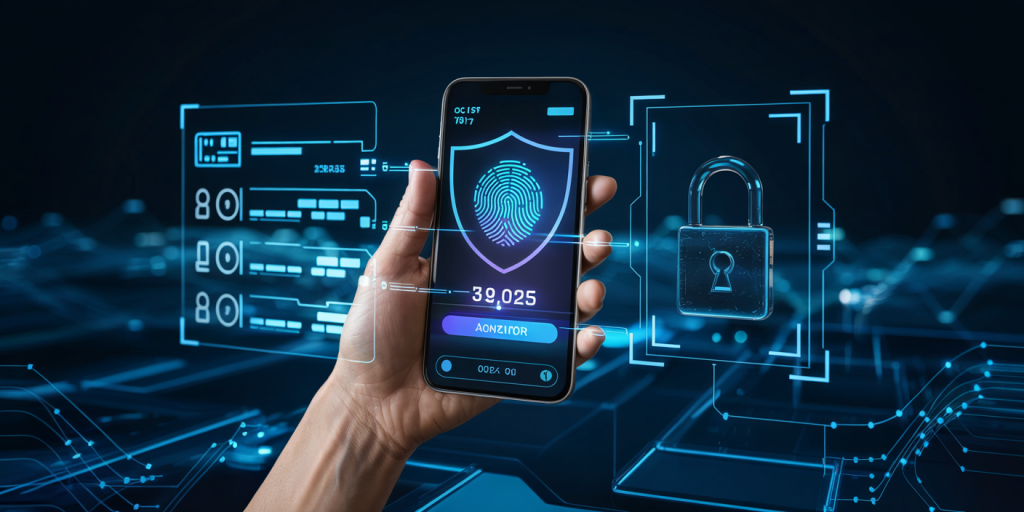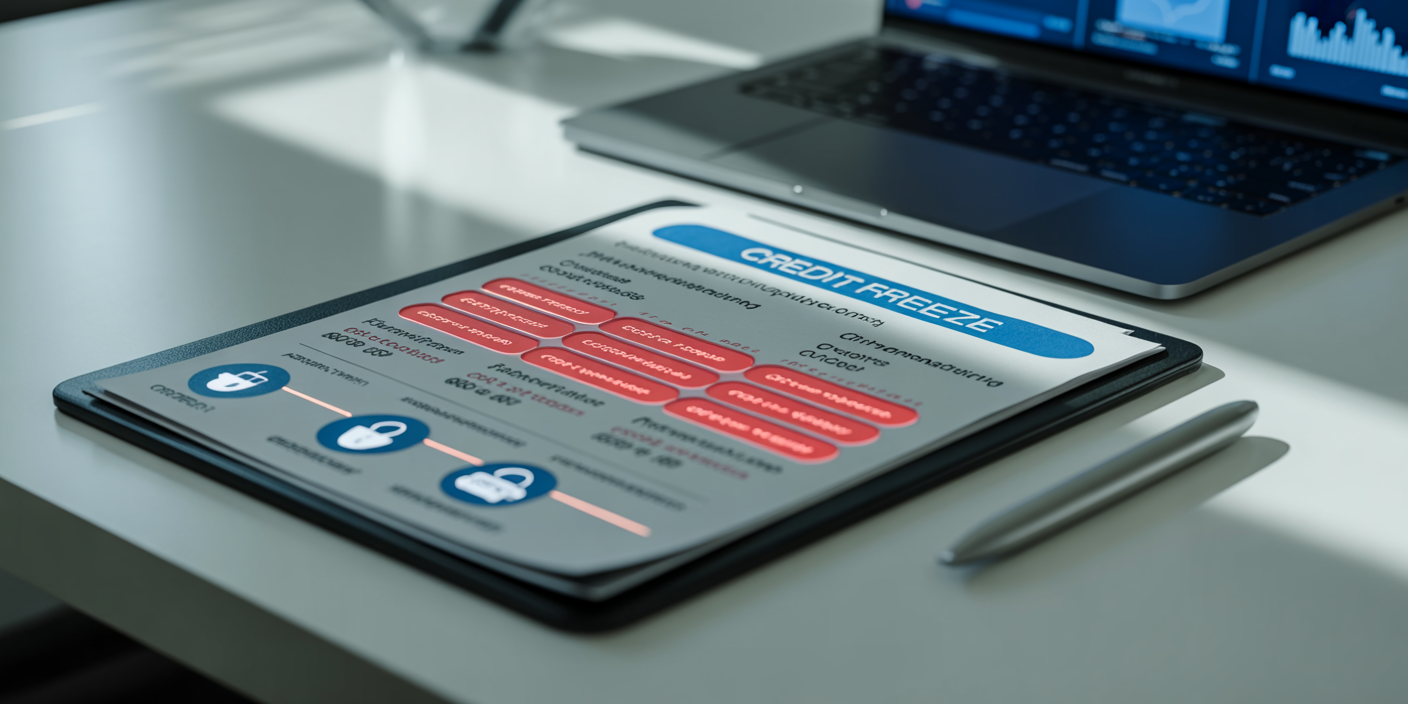Protecting Your Finances from Identity Theft and Fraud in 2025
Anúncios
As digital integration deepens in our personal and financial lives, identity theft and fraud remain some of the most pressing threats in 2025. Modern criminals exploit increasingly sophisticated methods to access sensitive information, leading to significant financial damage for individuals and financial institutions alike. According to the 2024 Javelin Strategy & Research report, identity fraud losses in the United States alone reached $52 billion in 2023, underscoring the critical need for effective and proactive financial protection strategies. Understanding the current landscape, adopting preventive measures, and preparing for future challenges are essential to safeguard your finances amid evolving cyber threats.
The rise in remote work, digital payments, and biometric authentication means criminals have multiple avenues of attack, including phishing, synthetic identity fraud, and malware. However, with the right knowledge and tools, consumers can mitigate the risks. This article delves into the most effective strategies for protecting your finances in 2025, illustrated through real-world examples and data-driven insights.
Anúncios
The Changing Landscape of Identity Theft and Financial Fraud in 2025
Identity theft has transformed significantly over the past decade. What began as simple credit card information theft has expanded into complex digital identity scams involving social engineering, data breaches, and sophisticated hacking techniques. The identity fraud rate increased by approximately 17% in 2024 compared to the previous year, according to Experian’s latest industry analysis. As more people adopt digital wallets and cryptocurrencies, new vectors for fraud have emerged. For instance, DeFi (decentralized finance) platforms experienced over $2 billion in fraud losses in 2023, marking a substantial leap from traditional scams.
Anúncios
A notable recent case involved the 2024 data breach at a well-known payment platform, where hackers extracted over 10 million user account details, leading to fraudulent transactions worth over $20 million. This incident highlights the vulnerability of even large, technologically advanced platforms and signifies why individual vigilance remains crucial.
To protect your finances, understanding these evolving threats—such as SIM swapping, synthetic identity fraud (where criminals create new fake identities using real and fabricated data), and account takeover scams—is essential. Awareness is the first step in defense.
Practical Measures to Secure Your Financial Information
One of the most effective ways to protect your finances is by implementing multi-layered security measures. Start with robust password management. Use unique, complex passwords for every financial account, and incorporate a reputable password manager to generate and store them safely. According to a survey by LastPass, 61% of breaches in 2024 occurred due to compromised credentials, emphasizing the necessity of strong passwords and their proper management.
Multi-factor authentication (MFA) is another critical protection tool. Whether it’s biometrics, a physical hardware token, or an authenticator app, MFA can thwart unauthorized access by requiring additional verification steps beyond passwords. Financial institutions increasingly mandate MFA, acknowledging its effectiveness. For example, following the adoption of MFA in 2023, one major bank reported a 40% decrease in unauthorized login attempts within the first six months.

Regularly monitoring your financial accounts is equally vital. Set up real-time alerts for transactions exceeding certain thresholds or any account changes. This immediate feedback can allow you to detect suspicious activities early. Practical examples include tools provided by apps like Mint or your bank’s proprietary platforms, which send SMS or email notifications instantly. Quick detection often results in quicker remediation, minimizing financial damage.
Leveraging Technology: AI and Blockchain in Fraud Prevention
The integration of advanced technologies such as artificial intelligence (AI) and blockchain technologies represents a turning point in fraud prevention. AI algorithms can analyze vast amounts of transaction data to identify and flag unusual patterns that may indicate fraudulent activities. For instance, Mastercard’s AI fraud detection system reportedly prevented $4.5 billion in potential fraudulent transactions worldwide during 2023, showcasing the technology’s immense value.
Blockchain technology also offers promising avenues for safeguarding transactions and identities. Since blockchain creates immutable ledgers, it drastically reduces the risk of data tampering or false representation. Some banks are already experimenting with blockchain-based identity verification systems that enable secure, decentralized authentication processes. For example, the blockchain project “ID2020” supports governments and private companies worldwide in creating tamper-proof digital IDs, fostering safer and more reliable verification methods.

However, while these technologies enhance security, consumers should not rely solely on them. Combining technological defenses with personal vigilance ensures a comprehensive shield against identity theft and fraud.
| Technology | Description | Key Benefit | Real-World Use Case |
|---|---|---|---|
| AI Fraud Detection | Uses machine learning to analyze transaction data | Early detection of anomalies | Mastercard’s AI system preventing $4.5B fraud |
| Blockchain Identity | Decentralized identity verification | Immutable and tamper-proof IDs | ID2020’s digital identity initiatives |
| Password Managers | Secure storage & generation of unique passwords | Reduces credential reuse | LastPass, 1Password |
| Multi-Factor Authentication (MFA) | Adds an extra verification step | Blocks unauthorized access | Bank-issued hardware tokens |
Recognizing and Avoiding Phishing and Social Engineering Scams
Phishing remains one of the most common and successful methods for identity theft. Cybercriminals craft deceptive emails, messages, or calls that trick victims into revealing personal information or clicking malicious links. The FBI’s Internet Crime Complaint Center (IC3) reported that phishing scams accounted for over 36% of all cybercrime complaints in 2024, with losses exceeding $1.9 billion.
In 2024, a well-publicized incident involved a phishing campaign targeting customers of a large health insurance provider. Attackers impersonated the company’s IT department, requesting users to “verify” their login credentials to prevent system lockdowns. Many users complied, inadvertently handing over sensitive information used later for fraudulent claims and account takeovers.
To avoid falling victim to phishing: Always verify the sender’s email address and be wary of urgent or threatening language. Never click on links or download attachments from unknown sources. Confirm suspicious communications by contacting the company directly using established contact methods. Utilize browser extensions and email filters designed to detect phishing attempts.
Educating yourself and family members on social engineering tactics is critical. Even sophisticated users can be deceived if caught off-guard. Companies that regularly hold cybersecurity awareness training report a 50% reduction in successful phishing attacks, a testament to the power of education.
Protecting Mobile and Online Transactions
Mobile devices are a primary gateway to financial services and thus a prime target for fraudsters. In 2024, mobile banking fraud grew by 38%, with criminals exploiting vulnerabilities in unsecured devices and malicious apps. Ensuring your mobile device’s security is paramount.
Always download apps from official stores like Google Play or Apple App Store and check app permissions carefully. Use mobile security apps that offer anti-malware protection and regularly update your phone’s operating system. Avoid using public Wi-Fi for financial transactions; if needed, use a reputable virtual private network (VPN) to encrypt your data.
Secure your online purchases by utilizing credit cards or secure payment systems like Apple Pay or Google Pay, which offer tokenization—replacing card data with unique tokens during transactions to prevent data theft. PayPal reported nearly zero consumer fraud losses in 2023 due to such technologies.
Regularly review your online statements and receipts. Promptly dispute any unauthorized charges, as timely action boosts the likelihood of recovery. Also, beware of fake e-commerce sites that mimic legitimate stores to steal payment information. Tools such as browser security extensions or websites like SSL Labs can help verify site security (look for HTTPS and a valid security certificate).
Future Perspectives: Preparing for Emerging Threats in Financial Security
Looking ahead, identity theft and fraud threats are likely to evolve with new technologies and increasing geopolitical complexities. The intersection of artificial intelligence and deepfake technology may create hyper-realistic impersonations, further challenging traditional verification methods. Experts predict that by 2027, deepfake scams could account for a significant share of financial fraud cases.
Quantum computing, while still developing, poses future risks to current cryptographic systems securing financial data. Organizations and consumers should monitor developments and prepare for quantum-resistant encryption methods expected to be mainstream by the early 2030s.
On the positive side, biometric authentication—such as fingerprint, facial recognition, and even behavioral biometrics—will become more widespread and sophisticated, adding robust layers of security. Governments and private sectors will likely implement more comprehensive digital identity frameworks, enabling faster and safer verification while reducing fraud.
Data privacy regulations continue to tighten globally, with policies like the European Union’s Digital Identity Wallet project aiming to empower users with better control over their data. These regulatory changes will influence how individuals share and protect their financial information across borders and platforms.
Consumers should remain adaptable, continuously update their knowledge, and leverage emerging security tools. Engaging with financial institutions proactively about their fraud prevention offerings and participating in financial wellness programs can help anticipate and mitigate risks.
Protecting your finances in 2025 demands vigilance, technology adoption, and education. By understanding the changing fraud landscape, employing practical security measures, and preparing for future threats, individuals can successfully defend their financial assets against identity theft and fraud. The collaboration between consumers, financial organizations, and technology developers is pivotal in building a safer financial ecosystem for the years ahead.




Post Comment